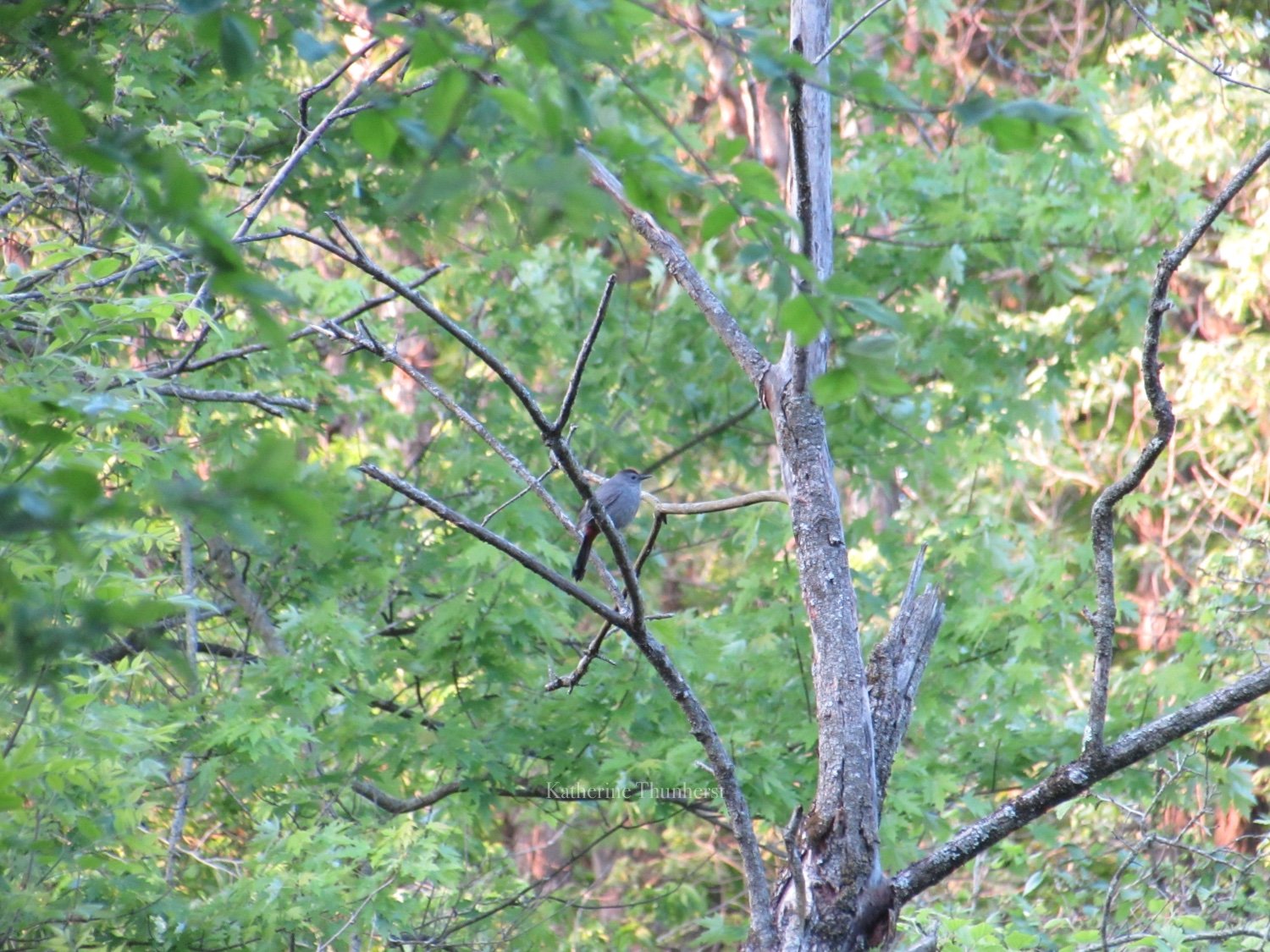A gray catbird occupies the perfect stage for an eclectic mixture of calls that fills the woodland.
World Migratory Bird Day was celebrated on May 11 this year. To take part in the celebration, I participated in Global Big Day, an event promoted by the Cornell Lab of Ornithology, inviting everyone to spend any amount of time looking and listening for birds on that day.
This year I focused on woodlands, visiting three. Each location shared some overlap in bird species, but each also yielded some unique faces.
The young greenery of the first woodland was chock-full of warblers: yellow warblers, yellow-rumped warblers, chestnut-sided warblers, black-throated green warblers. These small birds with varying color arrangements, which incorporated yellow hues at one point or another, mingled in quick flurries of flight alongside black-capped chickadees, American redstarts, and gray catbirds. Brown-headed cowbirds sauntered along the trail upon which I walked. Wood ducks floated down the creek, and a great blue heron flew silently overhead.
The eastern wood-pewee is an aerial hunter, catching insects in flight with a snap of its beak before looping back to its starting branch.
The second woodland was full of house wren activity. The musical communications of raspy calls and complicated whistles were large and elaborate, contrasting the tiny stature and relatively plain plumage of the singers. An eastern wood-pewee occupied the tip of a broken tree trunk. It repeatedly launched itself from its perch in pursuit of flying insects, returning to its starting point after each and usually accurate attempt. Robins hopped through the grass, collecting an assortment of arthropods in their beaks for hatchlings tucked inside nests.
Upon arriving at my third woodland destination, I was immediately greeted by goldfinches and indigo buntings. Eastern bluebirds were also spotted. I kept hearing the sharp buzzy call of the blue-gray gnatcatcher and finally had eyes on the little bird darting around the tree canopy. I followed one with my binoculars all the way to its nest. It hopped inside the small cup made of lichens and spiderwebs and settled in with its long tail protruding out over the edge.
The nest of the blue-gray gnatcatcher is one made of lichens and spiderwebs. The little cup of a nest is discrete. Here, the tail of a blue-gray gnatcatcher juts out from the nest, aiming to the upper right.
While my focus did revolve around birds in woodlands on this festive day, I could not help but also venture off to a pond and make a detour to a farm field, where I was able to add the likes of the green heron, pied-billed grebe, killdeer, chimney swift, and others to my list of sightings for the day.
And I, of course, delighted in encounters with other wildlife. I walked on one trail that was full of slugs traveling at a leisurely pace. White-tailed deer sloshed through water that collected in a low spot after a rain. At the pond, a snapping turtle peeked its head out of the water before slowly submerging itself again.
The object of Global Big Day is to acknowledge the birds we encounter. Keeping track of sightings is one way to do that. While this is something I do regularly, the excitement that surrounds such an event that takes place on World Migratory Bird Day is definite. It is quite fun to participate in a worldwide celebration of some of Earth’s spectacular beings.


